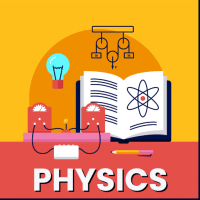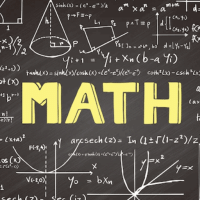JEE Exam > JEE Questions > In the circuit shown, initially keys K1, K2 a...
Start Learning for Free
In the circuit shown, initially keys K1, K2 and K3 are all open. Now certain events as described below are performed successively on the circuit which involve closing and opening of the keys K1, K2 and K3.
Event 1: Keys K1 and K2 are closed and K3 is left open.
Event 2: After a long time K2 is opened and K3 is closed.
Event 3: After a long time K1 is opened and K2 is closed.
Find the maximum charge that can come on the capacitor after the completion of all the three events
- a)40 μC
- b)108 μC
- c)60 μC
- d)80 μC
Correct answer is option 'B'. Can you explain this answer?
Verified Answer
In the circuit shown, initially keys K1, K2 and K3 are all open. Now c...
After completion of Event 1
Thus the capacitor again starts charging.
Charge on the capacitor will reach maximum value when current through the inductor becomes zero.
From conservation of energy between initial state (when i = 5 A, q = 40 μC) and final state (when i = 0, q = Qmax) we get
Solving for Qm ax w e get Qmax = 107.7 μC ≈ 108 μC

|
Explore Courses for JEE exam
|

|
In the circuit shown, initially keys K1, K2 and K3 are all open. Now certain events as described below are performed successively on the circuit which involve closing and opening of the keys K1, K2 and K3. Event 1: Keys K1 and K2 are closed and K3 is left open. Event 2: After a long time K2is opened and K3 is closed. Event 3: After a long time K1is opened and K2is closed.Find the maximum charge that can come on the capacitor after the completion of all the three events a)40 C b)108 C c)60 C d)80 C Correct answer is option 'B'. Can you explain this answer?
Question Description
In the circuit shown, initially keys K1, K2 and K3 are all open. Now certain events as described below are performed successively on the circuit which involve closing and opening of the keys K1, K2 and K3. Event 1: Keys K1 and K2 are closed and K3 is left open. Event 2: After a long time K2is opened and K3 is closed. Event 3: After a long time K1is opened and K2is closed.Find the maximum charge that can come on the capacitor after the completion of all the three events a)40 C b)108 C c)60 C d)80 C Correct answer is option 'B'. Can you explain this answer? for JEE 2025 is part of JEE preparation. The Question and answers have been prepared according to the JEE exam syllabus. Information about In the circuit shown, initially keys K1, K2 and K3 are all open. Now certain events as described below are performed successively on the circuit which involve closing and opening of the keys K1, K2 and K3. Event 1: Keys K1 and K2 are closed and K3 is left open. Event 2: After a long time K2is opened and K3 is closed. Event 3: After a long time K1is opened and K2is closed.Find the maximum charge that can come on the capacitor after the completion of all the three events a)40 C b)108 C c)60 C d)80 C Correct answer is option 'B'. Can you explain this answer? covers all topics & solutions for JEE 2025 Exam. Find important definitions, questions, meanings, examples, exercises and tests below for In the circuit shown, initially keys K1, K2 and K3 are all open. Now certain events as described below are performed successively on the circuit which involve closing and opening of the keys K1, K2 and K3. Event 1: Keys K1 and K2 are closed and K3 is left open. Event 2: After a long time K2is opened and K3 is closed. Event 3: After a long time K1is opened and K2is closed.Find the maximum charge that can come on the capacitor after the completion of all the three events a)40 C b)108 C c)60 C d)80 C Correct answer is option 'B'. Can you explain this answer?.
In the circuit shown, initially keys K1, K2 and K3 are all open. Now certain events as described below are performed successively on the circuit which involve closing and opening of the keys K1, K2 and K3. Event 1: Keys K1 and K2 are closed and K3 is left open. Event 2: After a long time K2is opened and K3 is closed. Event 3: After a long time K1is opened and K2is closed.Find the maximum charge that can come on the capacitor after the completion of all the three events a)40 C b)108 C c)60 C d)80 C Correct answer is option 'B'. Can you explain this answer? for JEE 2025 is part of JEE preparation. The Question and answers have been prepared according to the JEE exam syllabus. Information about In the circuit shown, initially keys K1, K2 and K3 are all open. Now certain events as described below are performed successively on the circuit which involve closing and opening of the keys K1, K2 and K3. Event 1: Keys K1 and K2 are closed and K3 is left open. Event 2: After a long time K2is opened and K3 is closed. Event 3: After a long time K1is opened and K2is closed.Find the maximum charge that can come on the capacitor after the completion of all the three events a)40 C b)108 C c)60 C d)80 C Correct answer is option 'B'. Can you explain this answer? covers all topics & solutions for JEE 2025 Exam. Find important definitions, questions, meanings, examples, exercises and tests below for In the circuit shown, initially keys K1, K2 and K3 are all open. Now certain events as described below are performed successively on the circuit which involve closing and opening of the keys K1, K2 and K3. Event 1: Keys K1 and K2 are closed and K3 is left open. Event 2: After a long time K2is opened and K3 is closed. Event 3: After a long time K1is opened and K2is closed.Find the maximum charge that can come on the capacitor after the completion of all the three events a)40 C b)108 C c)60 C d)80 C Correct answer is option 'B'. Can you explain this answer?.
Solutions for In the circuit shown, initially keys K1, K2 and K3 are all open. Now certain events as described below are performed successively on the circuit which involve closing and opening of the keys K1, K2 and K3. Event 1: Keys K1 and K2 are closed and K3 is left open. Event 2: After a long time K2is opened and K3 is closed. Event 3: After a long time K1is opened and K2is closed.Find the maximum charge that can come on the capacitor after the completion of all the three events a)40 C b)108 C c)60 C d)80 C Correct answer is option 'B'. Can you explain this answer? in English & in Hindi are available as part of our courses for JEE.
Download more important topics, notes, lectures and mock test series for JEE Exam by signing up for free.
Here you can find the meaning of In the circuit shown, initially keys K1, K2 and K3 are all open. Now certain events as described below are performed successively on the circuit which involve closing and opening of the keys K1, K2 and K3. Event 1: Keys K1 and K2 are closed and K3 is left open. Event 2: After a long time K2is opened and K3 is closed. Event 3: After a long time K1is opened and K2is closed.Find the maximum charge that can come on the capacitor after the completion of all the three events a)40 C b)108 C c)60 C d)80 C Correct answer is option 'B'. Can you explain this answer? defined & explained in the simplest way possible. Besides giving the explanation of
In the circuit shown, initially keys K1, K2 and K3 are all open. Now certain events as described below are performed successively on the circuit which involve closing and opening of the keys K1, K2 and K3. Event 1: Keys K1 and K2 are closed and K3 is left open. Event 2: After a long time K2is opened and K3 is closed. Event 3: After a long time K1is opened and K2is closed.Find the maximum charge that can come on the capacitor after the completion of all the three events a)40 C b)108 C c)60 C d)80 C Correct answer is option 'B'. Can you explain this answer?, a detailed solution for In the circuit shown, initially keys K1, K2 and K3 are all open. Now certain events as described below are performed successively on the circuit which involve closing and opening of the keys K1, K2 and K3. Event 1: Keys K1 and K2 are closed and K3 is left open. Event 2: After a long time K2is opened and K3 is closed. Event 3: After a long time K1is opened and K2is closed.Find the maximum charge that can come on the capacitor after the completion of all the three events a)40 C b)108 C c)60 C d)80 C Correct answer is option 'B'. Can you explain this answer? has been provided alongside types of In the circuit shown, initially keys K1, K2 and K3 are all open. Now certain events as described below are performed successively on the circuit which involve closing and opening of the keys K1, K2 and K3. Event 1: Keys K1 and K2 are closed and K3 is left open. Event 2: After a long time K2is opened and K3 is closed. Event 3: After a long time K1is opened and K2is closed.Find the maximum charge that can come on the capacitor after the completion of all the three events a)40 C b)108 C c)60 C d)80 C Correct answer is option 'B'. Can you explain this answer? theory, EduRev gives you an
ample number of questions to practice In the circuit shown, initially keys K1, K2 and K3 are all open. Now certain events as described below are performed successively on the circuit which involve closing and opening of the keys K1, K2 and K3. Event 1: Keys K1 and K2 are closed and K3 is left open. Event 2: After a long time K2is opened and K3 is closed. Event 3: After a long time K1is opened and K2is closed.Find the maximum charge that can come on the capacitor after the completion of all the three events a)40 C b)108 C c)60 C d)80 C Correct answer is option 'B'. Can you explain this answer? tests, examples and also practice JEE tests.

|
Explore Courses for JEE exam
|

|
Signup to solve all Doubts
Signup to see your scores go up within 7 days! Learn & Practice with 1000+ FREE Notes, Videos & Tests.



























